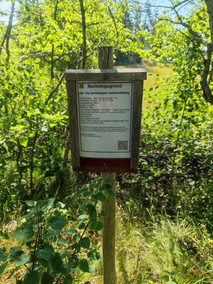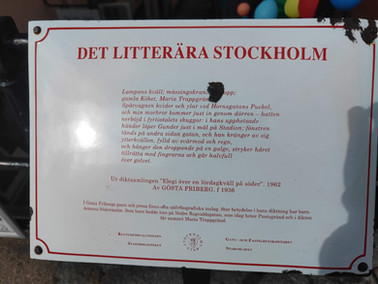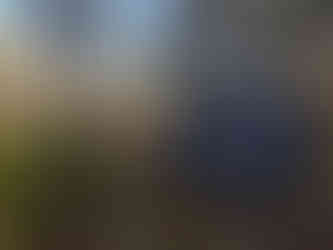Our cool new exploration travel show invites you to get more connected!
Do you like documentaries, learning about places and cultures, maybe far away? Or maybe right under your feet? Where distance can be measured both by time and space? Me too!
Still, maybe you’re also like me: tired of silly sensationalism in Discovery or Disney “documentaries”? Where tropes that lean into fedora-wearing dudes who "discover" sensations and uncover “mysteries” and go to “hidden” places are just plain laughable?
Then this show is for you.
Our first episode is about Stockholm's permanent defense, specifically the "Outer - H" or "Sausage" Line, built in early 1900s, stopped building in 1920s and abandoned in 1950s.
Our cool new exploration travel show came to life once upon a time when the Whole Famn Damily was visiting me as I worked in Beijing. As you often can, we came across a pile of rubble. Carefully preserved and walled off. “Why is this all here…?” asked Lad the Younger. I was able to explain, describing the original purpose, time period and why it didn't exist any longer – except as a pile of rubble, of course.
“Wow, dad! How did you know all that,” exclaimed Lad the Younger.
“Come on, you know: dad reads the signs,” sighed Lass the Elder.
Indeed, as often as not, there’s signs right next to sites, especially in big and important and historic cities. Sure, I knew much from my studies of Chinese and Beijing’s history, but the signs filled in even more details and made the rough looking stones sing with meaning.
As for “It’s in the Signs,” it was almost called “Dad Reads the Signs”! I am still pretty fond of that name, but decided "it" was more general and doesn't lock us into things being for “dads and kids” only.
Another family-famous statement from that trip: dad is a sucker for rubble.
Indeed, an upcoming episode is inspired by Lass the Elder’s observation while I was explaining Stockholm ship building: “Dad, you mean there’s rubble under all that water? Rubble I can’t even see? And I’m supposed to imagine how it looks?”
I may have to work on her vision and imagination.
You might ask: “Why, Chris?! Why are these piles of rocks, and decaying materials more interesting than, say, Beyonce? Or Taylor Swift? Or memes on the internet?”
Because I think about this all the time: “The past is never dead. It’s not even past,” from William Faulkner.
Happily, I’m not alone, as you can see. This video was a recent spark and inspiration for our cool new exploration travel show. It's nice to see a like-minded person noting: "there's only a couple generations between the Civil War and Fortnite," and explaining how much recentness there is to "old" or "ancient" things, not to mention highlighting how relevant they are to our modern lives.
Indeed, for me, rubble comes to life with a little bit of knowledge, connecting us to ourselves. Signs often give us that knowledge, providing the linking connection.
So, what makes the Discovery or Disney or other “documentaries” so laughable? We can see the tropes and call them out for what they are. First, there's the Indiana Jones wannabee false sense of adventure. Hiding the film crew, the location scouts and most importantly, the scientists and historians. After all, isn’t much of the information already there? In the signs??? Second, the language of false discovery and revelation. There's already experts in these areas. In fact, they're featured on many shows. Why not just make the show about them? Why not highlight their work, and contribution? And if there are revelations, make them about actual borders between knowledge and learning instead of setting up strawman, leading questions that are then contradicted just a few beats later.
Let's deconstruct one example, doing a rough cut for commentary and critique, to see if it doesn't help us spot everyday tropes and inspire us to go see more ourselves, banking on expertise all around.
In this segment, we have a scientist, trying to play Indiana Jones on TV. He’s interviewing local scientists, but shrouding it all in faux mystery and pretend discovery. As a result, many of the interesting parts are left out. Huge "lies by omission," in my opinion.
Take for example the small bit at the end. Here are two historians, literally staring at a sign written 2,000 years ago - reading it! Yet, it passes by without comment or appreciation. The segment is very personally astonishing to me, no less so because I’ve attained that skill myself. And so could you, with a little help from others with those skills. I mean, at a minimum, all you have to do is read the signs, right?
(This video may appear "blocked by Disney." That's because it's a commentary and critique using one of their shows, "Ancient China From Above." A Fair Use appeal has been filed, which YouTube promises is being reviewed. By Mickey himself, surely. Stay tuned!)
Speaking of Stockhom, and Sweden overall, I’ve been truly impressed by the signs. Sites and locales, even remote ones, have historical markers and explanations. I don’t mean the kinds of markers that US readers might imagine, either. Instead, these are boards with details about the location, the material found, it’s purpose and age. They really are quite amazing, and very often surprising. Literally.
For example, thanks to Billy White’s Sormlands100 ultra-marathon, a big deal for my Breaking Impossible efforts, my attention has been drawn to that county and the long trails stretching from around Mariefred through Gnesta, Nykoping, and all the way to Jogerso. Along these trails, in the middle of nowhere, you will come across signs. For example, ones describing ancient Viking sites and activities, like fornborgs (hill forts), charcoal manufacture, roads, runes and even graveyards.
The effort of putting these signs up really strikes me. That dumbstruck astonishment is the fertile ground where the seed of laughing at "documentaries" fell and sprouted.
So, instead of all the Indiana Jones wannabee shows, what if there was a show that…
demonstrated that there are sites and connections, right underfoot?
described exploring them and encouraged each of us to go out to see them?
created a community, rather than glorifying a presenter?
recognized and saluted the army of scientists, historians and sign makers working all around us?
promoted understanding, by highlighting: We The People swim in a sea of knowledge and possible connection, buoyed by history?
That’s my hope for “It’s in the Signs.”
The signs are all around us, providing knowledge and connecting us to time, place and peoples. Ultimately, connecting us to each other, in fact. Let’s enjoy!
A worldwide selection of signs that have made my day, one way or the other...!







































Comentários